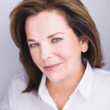Her hidden genius: a novel
Description
"Brings to life Franklin's grit and spirit...an important contribution to the historical record." —The Washington Post
The new novel from the New York Times bestselling author of The Mystery of Mrs. Christie!
She changed the world with her discovery. Three men took the credit.
Rosalind Franklin has always been an outsider—brilliant, but different. Whether working at the laboratory she adored in Paris or toiling at a university in London, she feels closest to the science, those unchanging laws of physics and chemistry that guide her experiments. When she is assigned to work on DNA, she believes she can unearth its secrets.
Rosalind knows if she just takes one more X-ray picture—one more after thousands—she can unlock the building blocks of life. Never again will she have to listen to her colleagues complain about her, especially Maurice Wilkins who'd rather conspire about genetics with James Watson and Francis Crick than work alongside her.
Then it finally happens—the double helix structure of DNA reveals itself to her with perfect clarity. But what unfolds next, Rosalind could have never predicted.
Marie Benedict's powerful new novel shines a light on a woman who sacrificed her life to discover the nature of our very DNA, a woman whose world-changing contributions were hidden by the men around her but whose relentless drive advanced our understanding of humankind.
Also By Marie Benedict:
The Other Einstein
Carnegie's Maid
The Only Woman in the Room
Lady Clementine
The Mystery of Mrs. Christie
More Details
9781432894559
9781728229409
Subjects
DNA -- Research -- History -- Fiction
Fiction
Franklin, Rosalind, -- 1920-1958 -- Fiction
Genetics -- Fiction
Historical Fiction
Literature
Molecular biologists -- Great Britain -- Biography -- Fiction
Sex discrimination -- Fiction
Women -- Fiction
Women molecular biologists -- Great Britain -- Fiction
Similar Titles From NoveList
Similar Authors From NoveList
Published Reviews
Booklist Review
Benedict adeptly brings forward another accomplished, intriguing, and unjustly overlooked or oversimplified real-life woman in a welcoming and involving historical novel. Here she returns to the realm of science, where she began with The Other Einstein (2016), to fictionalize the life of English chemist and X-ray crystallographer Rosalind Franklin. Readers are privy to Rosalind's inner world as she refuses to be deterred by family objections to her nontraditional life or derailed by the sexism she encounters in academia. She thrives in a congenial lab in Paris, where she makes extraordinary breakthroughs, falls in problematic love, and ignores cautions about working with radiation. Back in England, Rosalind, as Benedict so vividly elucidates, makes groundbreaking discoveries of the molecular structure of viruses and DNA, only to have Francis Crick and James Watson take credit for her work. Benedict subtly foreshadows Rosalind's death at 37 from ovarian cancer while conveying her vitality, conviction, and passion as she designs and conducts exacting experiments, writes and presents numerous significant papers, travels, and climbs mountains. Tough, forthright, and assiduous, Rosalind insists on doing science right and for the right reasons. Readers inspired to learn more about Franklin will enjoy Howard Markel's biography, The Secret of Life (2021).
Publisher's Weekly Review
Following The Mystery of Mrs. Christie, Benedict shines a light in this underwhelming story on Rosalind Franklin, the British chemist and X-ray crystallographer who dedicated her short life to uncovering the DNA molecule's structure. Rosalind begins researching X-rays in 1947 at a Paris lab where men and women are treated equally. Entranced by mentor Jacques Mering, she's about to return his romantic overtures when he mentions he's married. His subsequent affair with a new researcher is the catalyst for Rosalind to give notice and find a position in London. There she runs into staid British attitudes about women in the workplace and contempt for her work, which is now centered on DNA. The author details Rosalind's many run-ins with colleague Maurice Wilkins, who is in cahoots with molecular biologists James Watson and Francis Crick at a rival lab. In fact, the now-famed duo win the race to construct a DNA molecule model by essentially stealing years of Rosalind's painstaking work. The author spends a lot of time hammering on the well-known misogyny Rosalind faced, and tries to explicate her subject's discoveries; on the latter, she achieves varying degrees of success. Much has been written about the real Franklin, and unlike Benedict's other fictional chronicles of historical women, this doesn't add a whole lot to the story. (Jan.)
Kirkus Book Review
Dr. Rosalind Franklin, whose pivotal role in the discovery of DNA was overlooked, gets her due in Benedict's scholarly novel. The story begins in 1947, with Franklin's Paris period. After the unwelcoming attitude of London's scientific community, the atmosphere of the Paris lab is exhilarating for the 26-year-old chemist. There, her gender and bluntness are not held against her, and she fits right in with her fellow researchers. Her expertise in X-ray crystallography, a technique for documenting molecular structures, is honed while studying coal and carbons. But in 1951, a distracting obsession with her womanizing supervisor, Jacques Mering, whom she wisely rebuffs, drives her back to London and a fellowship at King's College, where she deploys crystallography to map DNA molecules. Her path crosses those of other DNA sleuths, including her fractious colleague Maurice Wilkins and Francis Crick and James Watson, two Cambridge researchers who will later claim all the glory and the Nobel Prize. Though her minute detailing of Franklin's experiments, not to mention the data-freighted dialogue, can be eye-glazing, Benedict's conclusions are sound: Franklin is way ahead of the men in verifying the structure of DNA and its helix shape. But Franklin's methodical habits in amassing data work against her in the race to take credit for her groundbreaking discoveries. The men, especially Wilkins, who undermines her at every turn, and Watson, who's not above snooping in her workspace, don't share Franklin's qualms about publishing results based on incomplete research. After leaving what would now be described as the hostile work environment at King's for Birkbeck College, Franklin's work on RNA paves the way for antiviral vaccines. But the denouement drags as Benedict seems unsure whether her protagonist should bridle at her unfair treatment or simply move on, as the real Franklin seems to have done, leaving her scores to be settled by others, posthumously. The cancer that killed Franklin in 1958 may have been attributable to long-term exposure to X-rays--like many of her peers, she was cavalier about safety precautions. Wise behavior seldom makes for electrifying fiction. Copyright (c) Kirkus Reviews, used with permission.
Booklist Reviews
Benedict adeptly brings forward another accomplished, intriguing, and unjustly overlooked or oversimplified real-life woman in a welcoming and involving historical novel. Here she returns to the realm of science, where she began with The Other Einstein (2016), to fictionalize the life of English chemist and X-ray crystallographer Rosalind Franklin. Readers are privy to Rosalind's inner world as she refuses to be deterred by family objections to her nontraditional life or derailed by the sexism she encounters in academia. She thrives in a congenial lab in Paris, where she makes extraordinary breakthroughs, falls in problematic love, and ignores cautions about working with radiation. Back in England, Rosalind, as Benedict so vividly elucidates, makes groundbreaking discoveries of the molecular structure of viruses and DNA, only to have Francis Crick and James Watson take credit for her work. Benedict subtly foreshadows Rosalind's death at 37 from ovarian cancer while conveying her vitality, conviction, and passion as she designs and conducts exacting experiments, writes and presents numerous significant papers, travels, and climbs mountains. Tough, forthright, and assiduous, Rosalind insists on doing science right and for the right reasons. Readers inspired to learn more about Franklin will enjoy Howard Markel's biography, The Secret of Life (2021). Copyright 2021 Booklist Reviews.
LJ Express Reviews
In early 1947, Dr. Rosalind Franklin leaves London for a job as a researcher in Paris, where she'll be using X-ray crystallography to study carbons. Having regularly endured sexism in England, Rosalind is delighted to find her French colleagues welcoming and appreciative of her intelligence. After she develops feelings for the head of the lab, though, and then learns that he has a wife and is also dating another researcher at the lab, Rosalind feels it's time to leave. She returns to England, where she studies DNA at King's College. This is groundbreaking work, and they are in a race to be the first to determine the structure of DNA. However, Rosalind again encounters prejudice and also disregard for her rigorous methods. When her work is stolen by rivals, she looks for another job. Moving to Birkbeck and shifting her focus to RNA in viruses, Rosalind builds a new, supportive team that makes great progress, but her work is cut tragically short when she dies of cancer. VERDICT As she does so well, Benedict (The Mystery of Mrs. Christie; with Victoria Christopher Murray, The Personal Librarian) again illuminates an overlooked female historical figure, accessibly highlighting Franklin's scientific achievements and also depicting some of her personal life.—Melissa DeWild, Comstock Park, MI
Copyright 2021 LJExpress.Publishers Weekly Reviews
Following The Mystery of Mrs. Christie, Benedict shines a light in this underwhelming story on Rosalind Franklin, the British chemist and X-ray crystallographer who dedicated her short life to uncovering the DNA molecule's structure. Rosalind begins researching X-rays in 1947 at a Paris lab where men and women are treated equally. Entranced by mentor Jacques Mering, she's about to return his romantic overtures when he mentions he's married. His subsequent affair with a new researcher is the catalyst for Rosalind to give notice and find a position in London. There she runs into staid British attitudes about women in the workplace and contempt for her work, which is now centered on DNA. The author details Rosalind's many run-ins with colleague Maurice Wilkins, who is in cahoots with molecular biologists James Watson and Francis Crick at a rival lab. In fact, the now-famed duo win the race to construct a DNA molecule model by essentially stealing years of Rosalind's painstaking work. The author spends a lot of time hammering on the well-known misogyny Rosalind faced, and tries to explicate her subject's discoveries; on the latter, she achieves varying degrees of success. Much has been written about the real Franklin, and unlike Benedict's other fictional chronicles of historical women, this doesn't add a whole lot to the story. (Jan.)
Copyright 2021 Publishers Weekly.

































